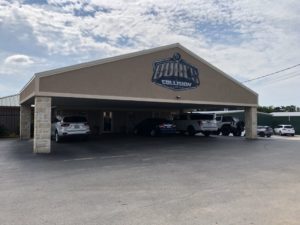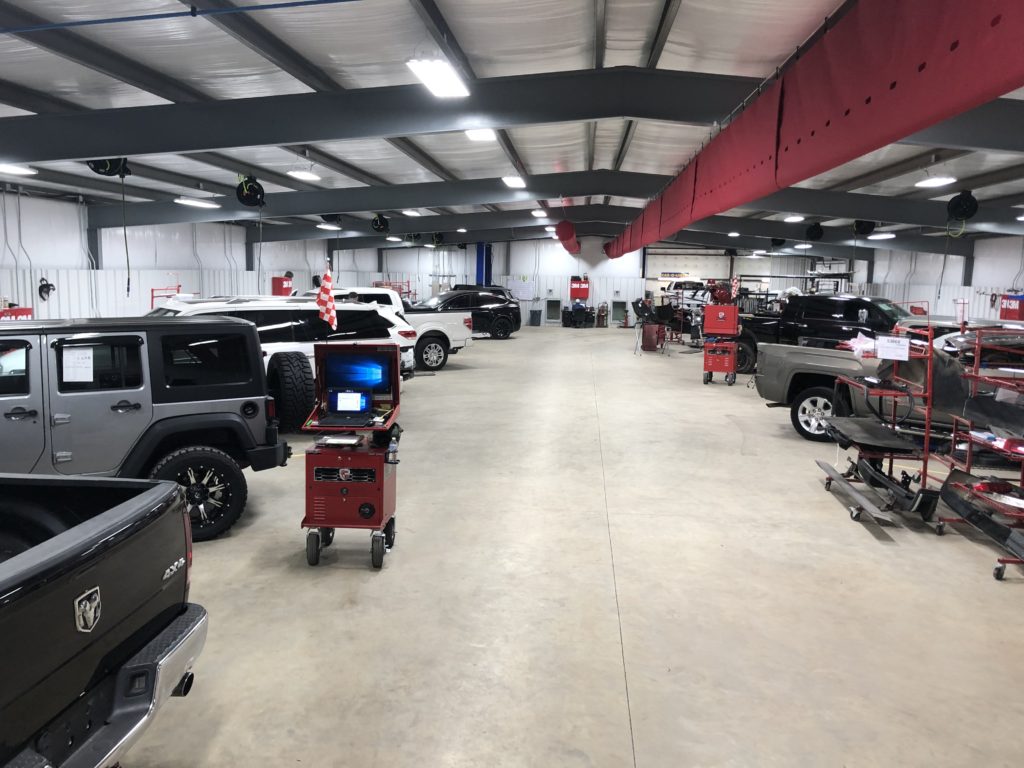
Tex. shop owner: Paying closer attention to parts ‘making a huge difference’
By onBusiness Practices | Education | Repair Operations
“Parts are a major issue,” Burl’s Collision Center owner Burl Richards said, and noted that he thought many repairers overlook the topic.
The veteran body shop owner and Auto Body Association of Texas President acknowledged he too historically hadn’t devoted enough time to the subject.
But now that his shop has done so, “it’s making a huge difference.”
The shop’s story might offer a playbook to fellow repairers — even experienced ones.
Burl’s Collision, for example, was already savvy enough to perform 100 percent teardown and blueprinting to ensure all necessary parts are discovered and ordered up front. (Rather than inefficiently discovering and ordering them piecemeal throughout a repair, as some shops do.) But even the Texas shop found it could improve its parts SOP further.
Richards said Burl’s Collision hired a “very, very experienced parts manager” and now uses a Google document (a document stored in the cloud, accessible and editable by multiple parties) to keep track of parts it’s ordered.
Richards said repairers might overlook just how much time they waste solving parts issues.
“There’s a lot” of administrative effort whenever a damaged or incorrect part is ordered, according to Richards, who gave examples of calling the vendor, obtaining the invoice, marking the issue, having the vendor sign, and getting material to bookkeeping.
“That’s hours and hours and hours” of administrative labor ultimately wasted, he said.
Learn smart shop practices at Repairer Driven Education
Get tips on improving your shop’s operations at SEMA with “Make more money: Improve overall gross profit,” featuring Steve Trapp of Axalta; “Completing ‘Thorough and Workmanlike’ repairs” with David Smith of Auto Damage Experts; “Sick and tired of collision management the old way?”, taught by Lee Rush, Sherwin-Williams; and “Offset tech shortages with improved efficiency,” with Shelia Principio of BASF, DeWayen White of Tom Bush Auto-Plex; and Tommy Daniels of BMW. The sessions are part of the Society of Collision Repair Specialists Repairer Driven Education Series running Nov. 4-8. Register here for individual courses or the series pass package deal, which includes the entire week of classes, all three parts of the OEM Summit, IDEAS Collide and the Nov. 7 Sky Villa afterparty.
Richards said he asked his parts manager to produce a list of why parts were being returned. He said 80 percent of parts issues stemmed from damaged parts, while perhaps 5 percent were tied to a shop ordering the wrong part.
However, the shop couldn’t address the issue of damaged parts until it know where the problem occurred.
“We can point the finger all day long,” he said, but data was necessary to enact change.
Once it started filling out the Google doc, the shop realized the issue was on the dealership’s end — parts were being delivered damaged. Armed with the proof, Burl’s Collision was able to warn that it would need to find another vendor if part conditions didn’t improve, according to Richards.
Since the shop has started documenting its reasons for returns, it’s seen parts issues “dwindle and dwindle and dwindle.”
He said the process has been “eye-opening.”
The technique could be even more helpful to shops who order alternative parts and have to keep track of potentially even more vendors and still another potential reason for returns.
Richards said “it’s very rare” his shop uses aftermarket parts anymore — Burl’s Collision is basically all-OEM.
But he said damaged parts were the primary issue Burl’s Collision experienced with OEM components, while fitment issues were the main problem with aftermarket ones back when his shop used them.
In what he cautioned was a “shooting at the hip” estimate, Richards calculated OEM parts didn’t fit about a tenth of the time. For aftermarket parts, the proportion was several times that amount, he said.
Featured images: Burl’s Collision Center has had good results by tracking closely the reason related to any part’s return. (Provided by Burl’s Collision Center)


